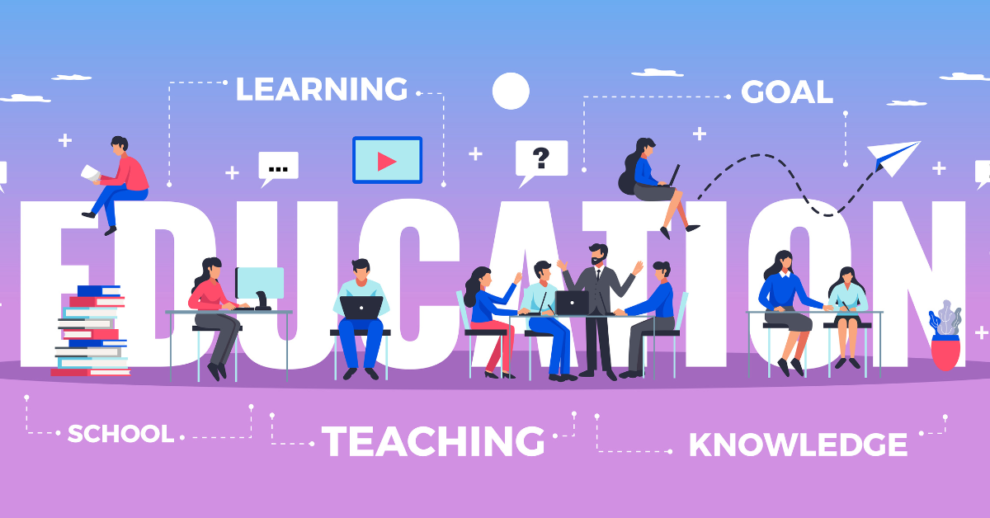Introduction
In today’s rapidly evolving world, education has broken free from the confines of traditional classrooms and textbooks. The advent of educational technology has ushered in a transformative era in learning, extending its influence well beyond individual students. Educational technology has become a cornerstone of national growth and development, redefining how nations prepare their citizens for the complex challenges of the 21st century. In this comprehensive 1500-word article, we’ll delve into how educational technology serves as a powerful catalyst for national progress and explore its multifaceted implications.
I. Widening Access to Education
One of the most profound ways in which educational technology propels national growth is by democratizing access to quality education. This is especially critical in developing countries where traditional educational avenues are often limited. Through online courses, e-learning platforms, and digital resources, individuals in remote areas now have the opportunity to access high-quality educational content. This democratization of education sets the stage for nurturing a more educated and skilled workforce, which, in turn, fuels economic growth.
A. Bridging the Urban-Rural Educational Divide
Educational technology effectively narrows the educational divide between urban and rural areas by granting remote and underserved regions access to the same educational opportunities available in urban centers. This is made possible through digital infrastructure, which ensures students in rural communities have access to the same educational resources, creating a more equitable distribution of knowledge and skills. In this context, we can observe the influence of IoT on business models as it supports remote monitoring and data analytics, ultimately enhancing the learning experience for students in underserved areas.
B. Lifelong Learning
Educational technology also fosters a culture of lifelong learning, making it easier for individuals to acquire new knowledge and skills throughout their lives. The continuous pursuit of knowledge enhances the employability of a nation’s workforce, contributing to a more dynamic and adaptable labor market. Within this framework, the concept of human-AI collaboration becomes pivotal, with AI algorithms helping individuals identify gaps in their learning journey and suggesting relevant resources for improvement.
II. Personalized Learning
Educational technology empowers the personalization of learning experiences, catering to individual needs and abilities, thus significantly influencing national growth.
A. Adaptive Learning Platforms
Adaptive learning platforms harness the power of data analytics and artificial intelligence to tailor educational content to each student’s unique pace, strengths, and weaknesses. The result is a more efficient and effective learning experience, enabling students to acquire knowledge and skills more rapidly. This, in turn, enhances productivity and innovation at the national level. What’s particularly intriguing is how human-AI collaboration seamlessly integrates within these platforms, enhancing individual learning journeys.
B. Reducing Dropout Rates
The personalization of learning also plays a crucial role in reducing dropout rates. By tailoring the learning experience to suit individual preferences, students become more engaged and motivated to complete their education. Lower dropout rates translate into a more educated and skilled workforce, a key driver of national growth.
III. Skill Development
The ever-evolving demands of the modern workforce increasingly emphasize the importance of technology and digital skills. Educational technology assumes a critical role in equipping students and the workforce with the skills essential for the 21st century.
A. STEM Education
Science, Technology, Engineering, and Mathematics (STEM) education are pivotal for national growth, given their role in driving innovation and competitiveness. Educational technology offers interactive simulations, coding courses, and digital labs that enrich STEM education. A well-educated STEM workforce is indispensable for a nation’s technological advancements and economic growth, exemplifying how technology, such as IoT, influences business models in industries reliant on innovation.
B. Digital Literacy
In an age dominated by digital technology, digital literacy is an imperative for both the workforce and citizens. Educational technology equips individuals with digital skills and an understanding of cybersecurity, enabling them to navigate the digital landscape safely and effectively. A digitally literate population contributes not only to economic growth but also to bolstering national cybersecurity.
IV. Enhancing Global Competitiveness
Educational technology empowers nations to maintain a competitive edge on the global stage, attracting international talent and expanding educational services.
A. Attracting International Talent
Nations with robust educational technology infrastructures often attract international talent. The influx of skilled professionals from around the world fosters innovation, diversity, and a dynamic economy. In this context, the concept of human-AI collaboration plays a key role in drawing international talent, as AI-powered translation and communication tools facilitate seamless collaboration among individuals from diverse linguistic backgrounds.
B. Exporting Educational Services
Educational technology doesn’t merely serve domestic education; it’s also a valuable exportable service. Nations can offer online courses and educational resources to students in other countries, generating revenue and strengthening their global influence. This international expansion of educational technology is a prime example of how the influence of IoT on business models extends to the global market, generating new opportunities for economic growth.
V. Fostering Research and Innovation
Educational technology acts as a catalyst for research and innovation by connecting students and researchers to a vast repository of knowledge, data, and global networks.
A. Open Access to Information
The internet and digital libraries provide students and researchers with unfettered access to a wealth of information, accelerating scientific discoveries and technological advancements—both pivotal drivers of national growth. In research, the collaboration between human intelligence and AI capabilities is increasingly evident, with AI algorithms assisting in data analysis, thereby expediting the pace of discoveries.
B. Collaborative Research
Educational technology facilitates collaborative research among students and researchers worldwide, leading to breakthroughs and innovations that benefit the nation and the global community. In these collaborative efforts, the synergy between human intelligence and AI capabilities further accelerates the research process.
VI. Cost Efficiency
Traditional educational systems are often resource-intensive, with high infrastructure and operational costs. Educational technology significantly reduces these costs, making it a financially sustainable option for many nations.
A. Reduced Infrastructure Expenses
Online learning platforms eliminate the need for extensive physical infrastructure, resulting in substantial cost savings. Funds that would have been allocated to infrastructure can be redirected toward enhancing educational quality and expanding access. This cost-efficiency is particularly important in a world where the influence of IoT on business models has redefined cost structures across various industries.
B. Scalability
Educational technology enables the scalable delivery of educational programs. A well-designed online course can be accessed by thousands of students simultaneously, making it a cost-effective means of educating the masses. The scalability of educational technology aligns with the adaptability and cost-effectiveness that IoT introduces to various industries.
Conclusion
Educational technology serves as more than just a tool for individual learning; it stands as a cornerstone for national growth. By broadening access to education, personalizing learning experiences, developing critical skills, enhancing global competitiveness, fostering research and innovation, and reducing costs, educational technology brings about a profound and positive impact on a nation’s development. As we continue to embrace the potential of educational technology, we can anticipate a brighter and more prosperous future, where the influence of IoT on business models and the concept of human-AI collaboration continue to shape our educational landscape and drive national progress.














Add Comment